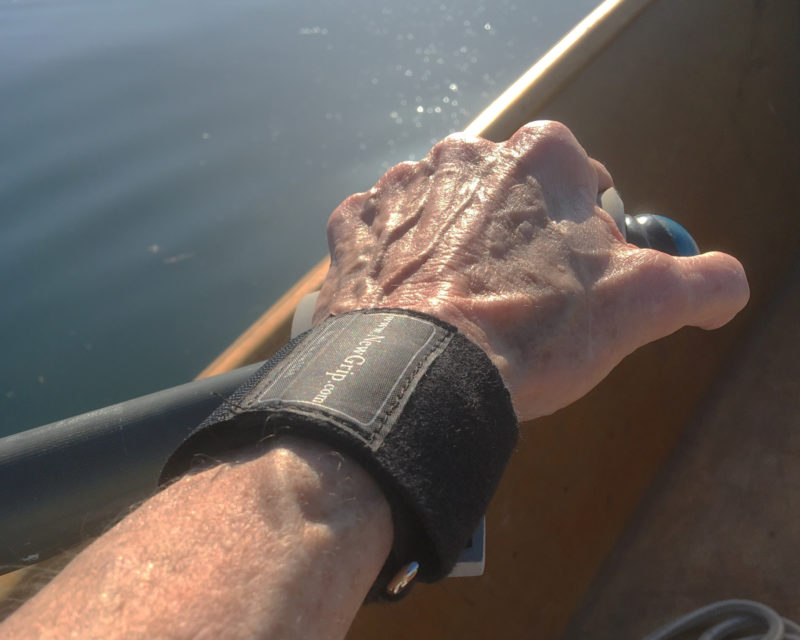 Dale McKinnon
Dale McKinnonDuring the author’s four-hour row in hot weather, the NewGrip pads prevented the hot spots that would have caused blisters.
Blisters are a rower’s nemesis, and any way to prevent them or reduce their severity and frequency would be welcomed. Lots of rowers try gloves, but seams and creases in the material, and sweat and heat generally make blisters worse. Tape is another option, but it takes time to apply and lasts only for the day.
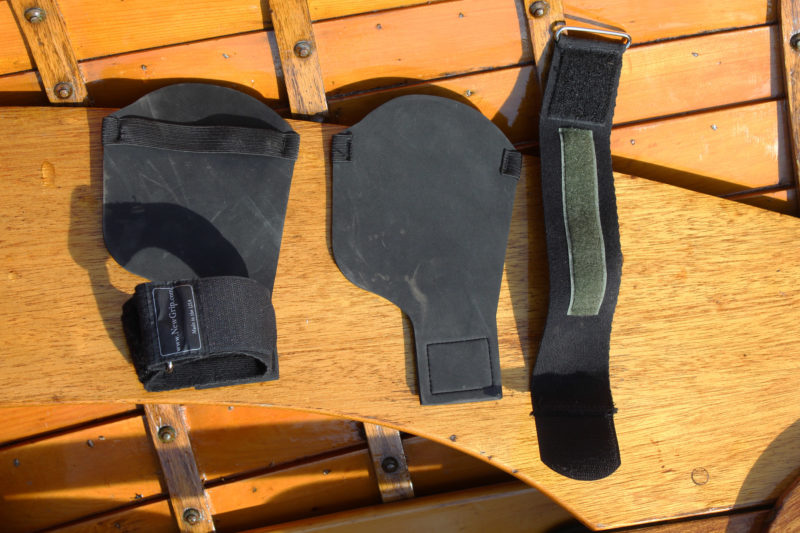 SBM
SBMThe Pro Model is equipped with wrist straps that attach to Velcro patches sewn on the neoprene pads.
Most competitive, open-water, and expedition rowers row with bare hands and work through a phase of blisters to get calluses. But calluses will fade if you stop rowing over the winter, and you may then have to toughen your hands again. I’ve tried many remedies in the past 20 years and settled on Row-Wik tape, a thinly padded tape wrapped around oar grips. The tape has eliminated blisters on my fingers and palms, but has some disadvantages: I sometimes still get blisters on my thumbs when out for weeklong trips, and I can’t move the tape to another set of oars.
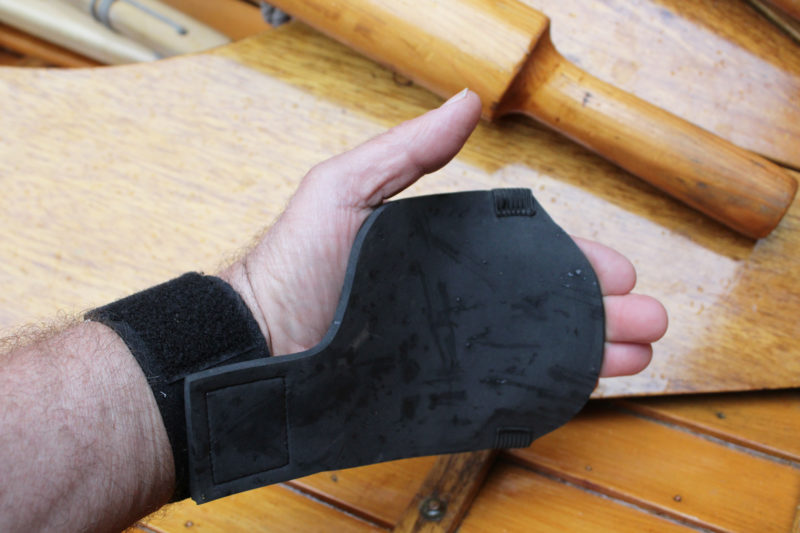 SBM
SBMThe Pro Model is recommended by NewGrip for rowing: the wrist strap is made of cotton webbing for better comfort against the skin and is said to relieve the strain that causes sore wrists and carpal tunnel syndrome.
After a recent 10-mile row in 85° heat using the Pro Model, I think the NewGrip concept is going in the right direction. NewGrips protect hands with 3/16″ neoprene pads attached across the back of the fingers by elastic straps and around the wrist by detachable, adjustable Velcro straps. On one outing with the NewGrips I started rowing on the morning of a day that would warm up to the 80s. My fingers stayed cool, but I wasn’t used to the Velcro wrist straps. I ‘d put the straps on snug so they wouldn’t rub; they got too hot under the direct sun, and I wasn’t comfortable with the pressure and movement on the top of my wrist from feathering the oars at the end of each pull. I removed the wrist straps and rowed with just the elastics holding the pad to my fingers. (NewGrips come in a version without the wrist straps.)
To see what how the NewGrips worked when wet, I dunked them, expecting I’d have to squeeze water from them when I put them back on, but the neoprene didn’t absorb any water. I shook the water off and could still row with a secure grip.
I hadn’t done a long row in the previous month, and my hands were very soft and callus-free, but with NewGrips, after an hour of rowing when I’d normally feel some hot spots, my hands were in good shape. With temperatures rising to 84°, the black elastic straps across the backs of my fingers heated up, so I pulled my fingers free from the elastic and instead slid only a middle finger under each elastic while all other fingers were on top. This worked, and my palms and fingers were cooler.
At the end of a 10 ½-mile, 4-hour row, my hands were in good shape. It was odd to come in from a long row and not have to inspect my hands for damage. NewGrips may look a little clumsy, but they are functionally elegant and eliminate the threat of blisters. They made me wonder: Why didn’t someone think of this sooner?![]()
NewGrips—without strap, $14.99; with strap $27.99—are available from direct from the manufacturer.
Dale McKinnon began rowing in 2002 at the age of 57 and in 2004 rowed solo from Ketchikan, Alaska, to her home town, Bellingham, Washington. In 2005 she rowed from Ketchikan to Juneau.
Editor’s note:
I also rowed with NewGrips, both the PowerPads without the straps and the Pro Model with them. As simple as they appear, I was skeptical about how well they’d work, but soon took a liking to them. The benefit they provide was made most clear when I rowed hard for a few miles with a PowerPad on one hand and the other hand bare. The difference was more than just having a bit of firm paddling. On the bare hand I could feel the shear my skin was subjected to as the bones in my fingers pulled toward the bow and the oar handle resisted that motion. The skin in between would get stretched in some places, pinched in others and develop hot spots. With the PowerPad, I couldn’t detect any shear—I could feel the neoprene staying with my skin and keeping it from getting distorted. Like Dale, I didn’t develop any hot spots.
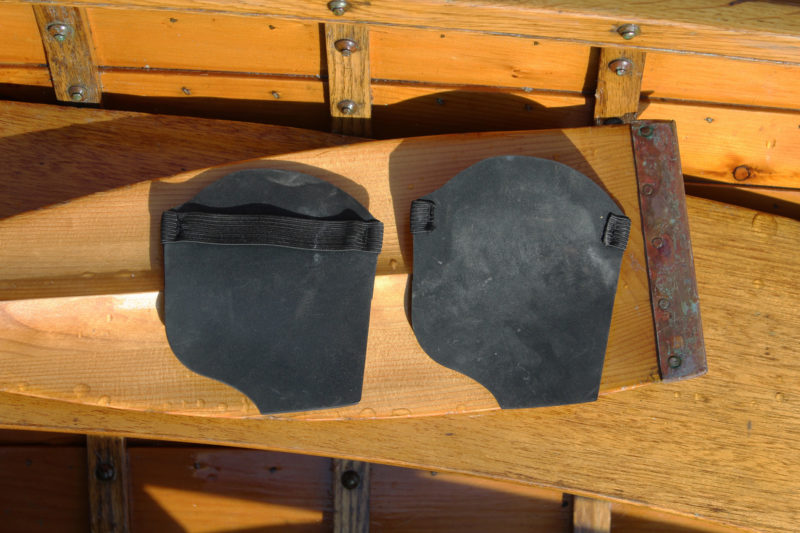 SBM
SBMThe finger straps on the Power Pads are sufficient to hold them in place over your palms.
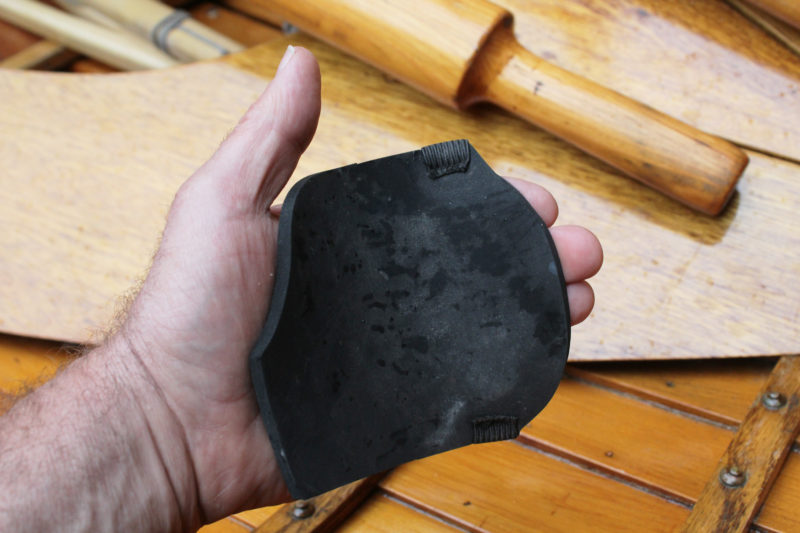 SBM
SBMFor pulling, the pad is moved toward the fingertips; for pushing it is placed closer to the wrist.
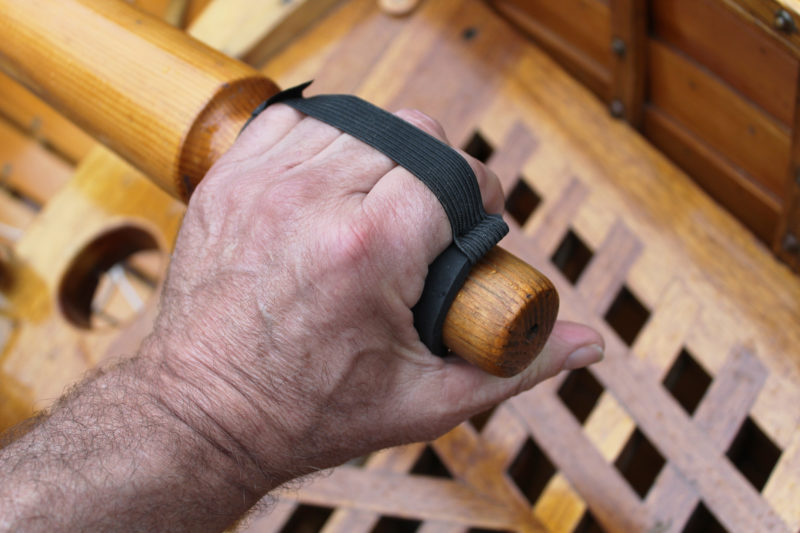 SBM
SBMYou can slip all of your fingers or just some under the strap, whichever is more comfortable.
During the recovery part of the stroke, I keep my wrists straight and my fingers cocked back, pushing the handle sternward with the perimeter of my palm. It’s a very relaxed and loose grip, but the PowerPad didn’t diminish the control I had on the oar. Even when the pads and my hands were wet, the neoprene didn’t absorb water or get slippery. The wrist straps on the Pro Model felt a bit strange, though not uncomfortable, but reminded me not to drop my wrists too much at the release.
Is there a product that might be useful for boatbuilding, cruising or shore-side camping that you’d like us to review? Please email your suggestions.
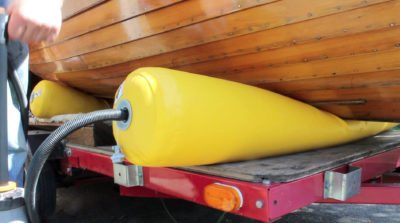
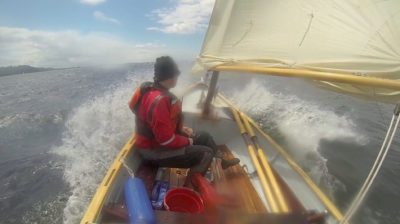
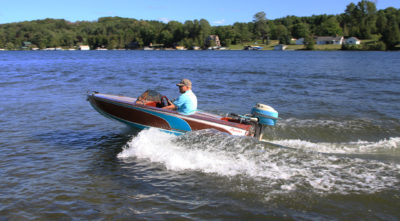
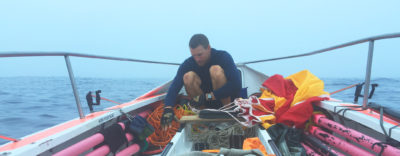
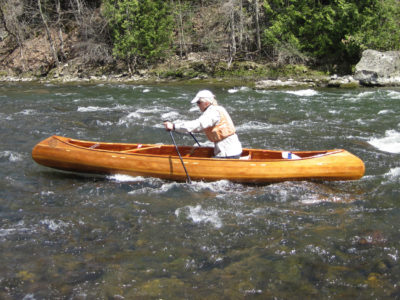
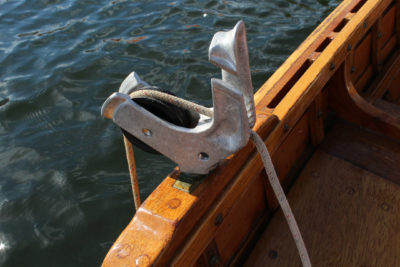
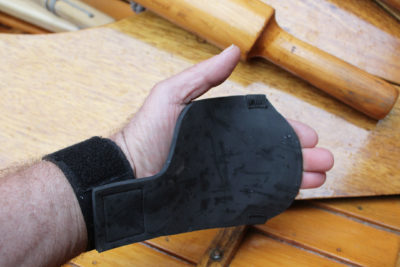

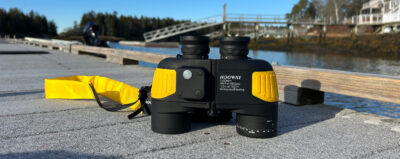
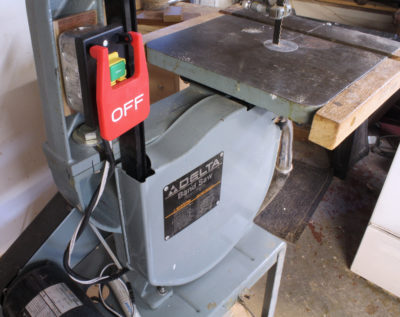
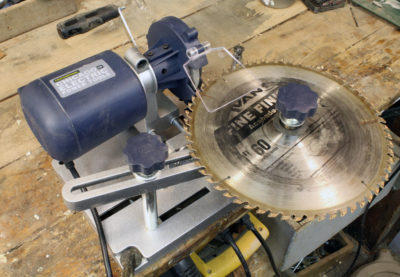
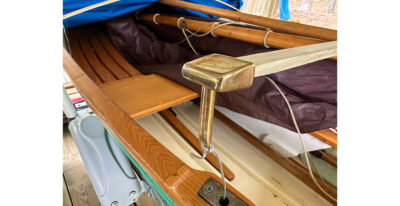
I’m wondering if you could accomplish the same benefit by simply gluing neoprene to the oar handle? I expect you would place the seam in just the right location so your hand never slides over it. Wonder what glue would work and if you can baseball-stitch the seam like you do leather on the loom?
I haven’t tried putting a similar neoprene on the grip, but my guess is that there is an advantage in having the neoprene move, if only slightly, on the oar handle and be more stationary on the hand. It wasn’t so much the padding that made the difference, but the elimination of the skin being dragged by the handle.
Were the oars being feathered in either of these cases? Still work OK?
Yes. I should have mentioned that my fingers are cocked back because that’s how I hold the blade on the feather. (It’s an element of the Thames Waterman’s stroke I described in an article in the September/October issue of WoodenBoat.) That NewGrips didn’t interfere with that loose, open grip on the handle was what surprised me most. I thought I’d have to close my grip to hang on to the handle, but that wasn’t the case.